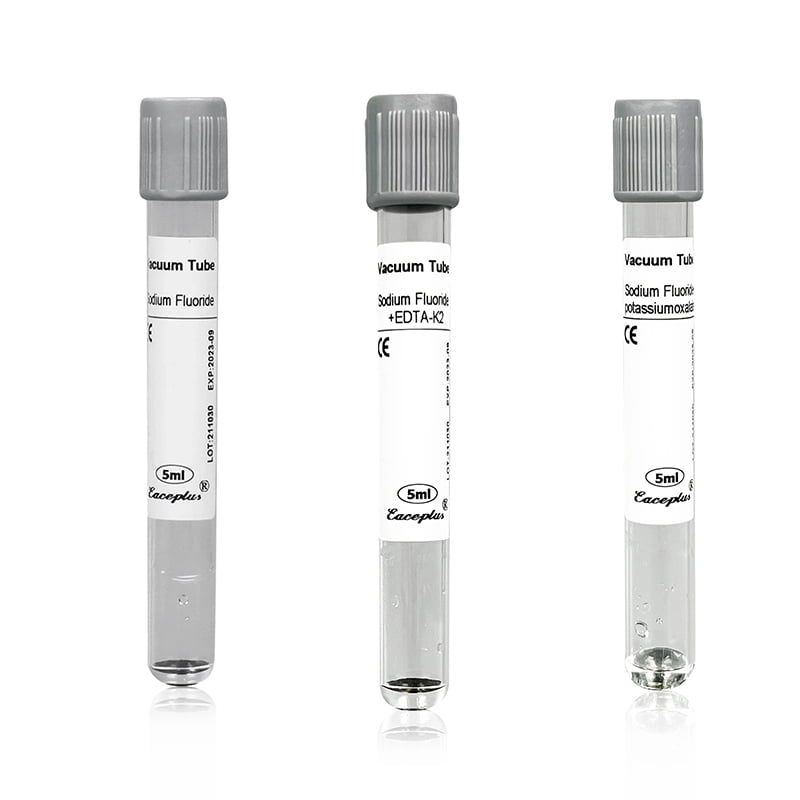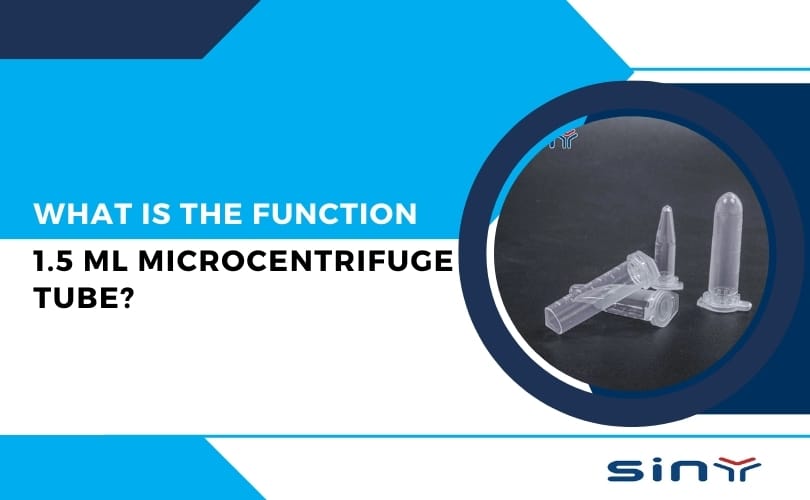In today’s fast-paced world, healthcare professionals and researchers understand the value of accurate and reliable blood sample analysis. However, they face a common challenge – the degradation of blood samples over time. This is where sodium fluoride and potassium oxalate tubes come into the picture. Acting as powerful preservatives, these tubes play a crucial role in preventing the breakdown of essential components in blood samples.
Table of Contents
- 1 Introduction
- 2 Understanding the importance of blood sample preservation
- 3 Sodium fluoride tubes: purpose and benefits
- 4 Potassium oxalate tubes: purpose and benefits
- 5 The role of sodium fluoride and potassium oxalate in preventing glycolysis
- 6 How sodium fluoride and potassium oxalate preserve blood glucose levels
- 7 Sodium fluoride and potassium oxalate tubes in hematology testing
- 8 Sodium fluoride and potassium oxalate tubes in glucose tolerance tests
- 9 Sodium fluoride and potassium oxalate tubes in alcohol testing
- 10 Proper handling and storage of blood samples with sodium fluoride and potassium oxalate tubes
- 11 Conclusion: the significance of using sodium fluoride
Introduction
Sodium fluoride inhibits the enzymes responsible for the breakdown of glucose, ensuring accurate measurement of blood sugar levels. On the other hand, potassium oxalate prevents the clotting of blood, allowing for efficient separation of plasma. With the combined use of these tubes, researchers can obtain high-quality plasma or serum for various diagnostic tests.
By using sodium fluoride and potassium oxalate tubes, healthcare providers can ensure accurate and reliable results for tests such as glucose, lactate, and alcohol levels. Moreover, this preventive measure minimizes the risk of inaccurate diagnoses and treatment plans, leading to improved patient care.
Understanding the importance of blood sample preservation
Accurate analysis of blood samples is vital for diagnosing and monitoring various medical conditions. However, blood samples are susceptible to degradation due to the breakdown of enzymes and clotting factors. This degradation can lead to inaccurate test results and compromised patient care. To prevent this, healthcare professionals rely on sodium fluoride and potassium oxalate tubes.
| Brand | Eaceplus |
| Type Of Disinfection | Ozone |
| Functional Use | Diagnostic Instruments, Medical Materials &Amp; Accessories |
| Inventory | Yes |
| Shelf Life | 2 Years |
| Material | Pp, Pvc |
| Product Quality Certification | Ce |
| Medical Device Classification | Class Ii |

Sodium fluoride tubes: purpose and benefits
Sodium fluoride tubes are commonly used to preserve blood samples for glucose testing. Glucose is a crucial parameter for diagnosing and managing diabetes. Sodium fluoride acts as an inhibitor, preventing the enzymes responsible for the breakdown of glucose. By inhibiting glycolysis, the process by which glucose is metabolized, sodium fluoride ensures accurate measurement of blood sugar levels.
In addition to preserving glucose levels, sodium fluoride also helps maintain lactate levels in blood samples. Lactate is a byproduct of glucose metabolism and is often measured to assess tissue oxygenation and metabolic status. By preventing lactate breakdown, sodium fluoride enables accurate lactate level measurements, providing valuable information for clinical decision-making.
Furthermore, sodium fluoride is used in alcohol testing. It inhibits the enzymes involved in alcohol metabolism, allowing for accurate measurement of blood alcohol levels. This is crucial in situations such as forensic investigations, DUI cases, and monitoring alcohol consumption in individuals undergoing treatment for alcoholism.
Potassium oxalate tubes: purpose and benefits
Potassium oxalate tubes, in combination with sodium fluoride, are primarily used for the collection of plasma samples. Plasma is the liquid component of blood that is separated from the cellular elements. Potassium oxalate prevents the clotting of blood, allowing for efficient separation of plasma from the red blood cells. This is essential for various diagnostic tests that require the analysis of plasma, such as liver function tests and lipid profiles.
By preventing clotting, potassium oxalate ensures that the obtained plasma is of high quality and suitable for accurate analysis. This is especially important in cases where the plasma needs to be stored for an extended period before testing, as clotting can compromise the integrity of the sample.
The role of sodium fluoride and potassium oxalate in preventing glycolysis
Glycolysis is the metabolic pathway that breaks down glucose to produce energy. In blood samples, glycolysis can occur rapidly, leading to a decrease in glucose levels. This can result in falsely low measurements of blood sugar, potentially leading to a misdiagnosis or inappropriate treatment. Sodium fluoride plays a crucial role in inhibiting the enzymes involved in glycolysis, preventing the breakdown of glucose and ensuring accurate measurement.
When sodium fluoride is combined with potassium oxalate, the preservation of glucose levels is further enhanced. Potassium oxalate acts as an anticoagulant and prevents the formation of blood clots. This allows for the separation of plasma, which contains glucose, from the red blood cells. By inhibiting clotting, potassium oxalate contributes to the overall preservation of glucose levels in the sample.
How sodium fluoride and potassium oxalate preserve blood glucose levels
Sodium fluoride works by inhibiting the enzymes hexokinase and enolase, which are involved in glucose metabolism. Hexokinase catalyzes the first step of glycolysis, while enolase is responsible for the conversion of 2-phosphoglycerate to phosphoenolpyruvate. By inhibiting these enzymes, sodium fluoride prevents the breakdown of glucose and maintains its concentration in the blood sample.

Potassium oxalate, on the other hand, prevents clotting by binding to calcium ions, which are essential for the coagulation cascade. By chelating calcium ions, potassium oxalate inhibits the activation of clotting factors and ensures the separation of plasma from the red blood cells. This separation allows for the accurate measurement of glucose levels in the plasma without interference from the cellular components.
Sodium fluoride and potassium oxalate tubes in hematology testing
In addition to their role in glucose and lactate testing, sodium fluoride and potassium oxalate tubes are also used in hematology testing. Hematology testing involves the analysis of blood cells, including red blood cells, white blood cells, and platelets. To obtain accurate results, it is important to prevent clotting and preserve the integrity of the cellular components.
By inhibiting clotting, potassium oxalate allows for the separation of plasma from the cellular elements, which are then used for hematology testing. Sodium fluoride, in combination with potassium oxalate, ensures that the sample remains stable during transportation and storage, minimizing the risk of cell degradation and preserving the integrity of the blood cells for analysis.
Sodium fluoride and potassium oxalate tubes in glucose tolerance tests
Glucose tolerance tests (GTT) are performed to evaluate the body’s ability to regulate blood sugar levels. During this test, the patient consumes a glucose solution, and blood samples are taken at regular intervals to measure the response of the body. Sodium fluoride and potassium oxalate tubes are used to preserve the glucose levels in these samples.

By inhibiting glycolysis, sodium fluoride ensures that the glucose levels in the blood samples remain stable throughout the test. This is important for the accurate interpretation of the results and the proper diagnosis of conditions such as diabetes and impaired glucose tolerance. The use of potassium oxalate tubes further enhances the preservation of glucose levels by preventing clotting and ensuring the integrity of the plasma samples.
Sodium fluoride and potassium oxalate tubes in alcohol testing
Alcohol testing is crucial in various scenarios, including forensic investigations, monitoring alcohol consumption, and assessing impairment in DUI cases. Sodium fluoride and potassium oxalate tubes are used to preserve blood samples for accurate alcohol level measurement.
Sodium fluoride inhibits the enzymes involved in alcohol metabolism, preventing the breakdown of alcohol in the blood sample. This ensures that the measured alcohol levels reflect the true concentration at the time of sample collection. When used in combination with potassium oxalate, sodium fluoride also prevents clotting, allowing for the collection of high-quality plasma samples for alcohol analysis.
Proper handling and storage of blood samples with sodium fluoride and potassium oxalate tubes
To ensure accurate and reliable results, proper handling and storage of blood samples collected with sodium fluoride and potassium oxalate tubes are essential. The following guidelines should be followed:
1. Samples should be collected using aseptic techniques to minimize contamination.
2. Tubes should be properly labeled with patient information and the type of additive present.
3. Samples should be gently mixed after collection to ensure proper mixing of the additive with the blood.
4. Tubes should be stored at the appropriate temperature according to the specific requirements of the tests to be performed.
5. Samples should be transported to the laboratory in a timely manner, following any specific transportation guidelines.
By adhering to these guidelines, healthcare professionals can maximize the preservation of blood samples and ensure accurate analysis for diagnostic and research purposes.
Conclusion: the significance of using sodium fluoride
In conclusion, the use of sodium fluoride and potassium oxalate tubes is of utmost importance in preventing blood sample degradation and ensuring accurate analysis. Sodium fluoride inhibits the enzymes responsible for the breakdown of glucose and lactate, while potassium oxalate prevents clotting, allowing for the separation of plasma from the cellular components.
By preserving the integrity of blood samples, these tubes enable healthcare professionals and researchers to obtain high-quality plasma or serum for various diagnostic tests. Whether it’s glucose testing, hematology analysis, or alcohol measurement, the use of sodium fluoride and potassium oxalate tubes plays a vital role in obtaining accurate and reliable results.
In the fast-paced world of healthcare and research, where time and precision are crucial, the importance of using sodium fluoride and potassium oxalate tubes cannot be overstated. By ensuring accurate measurements and minimizing the risk of inaccurate diagnoses and treatment plans, these tubes contribute to improved patient care and better outcomes for individuals around the world.



























































